Understanding Medical Devices Used in Home Health Monitoring
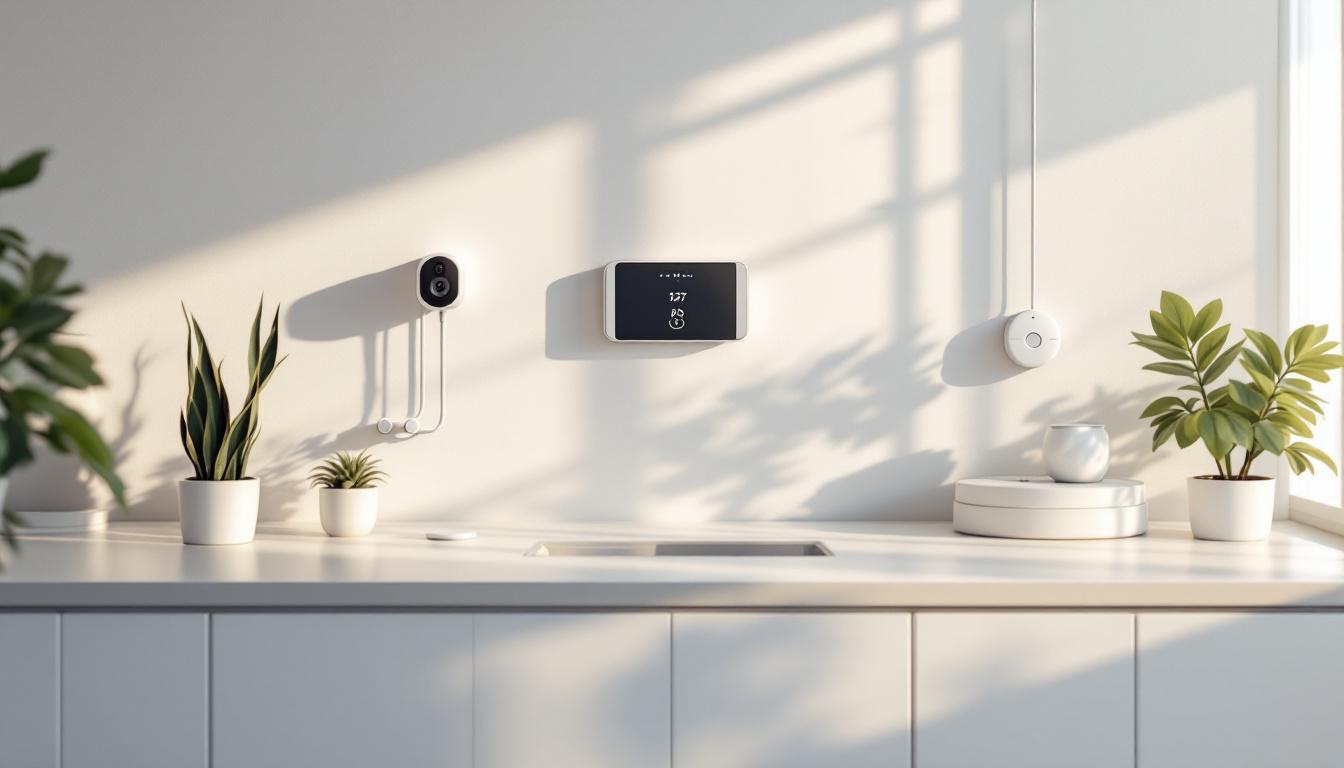
An Overview of Home Health Monitoring Devices and their Impact
The increasing shift toward home healthcare reflects technological advancements that empower individuals to monitor their health outside traditional clinical settings. With a broad spectrum of devices—from simple thermometers to sophisticated wearable sensors—these tools enable proactive disease management, early detection of health issues, and improved clinical outcomes. This article explores the types, functions, design considerations, safety standards, and future trends of medical devices used in home health monitoring, illustrating how they are transforming personalized healthcare.
Common Medical Devices in Home Settings
What are some common medical devices used by individuals at home?
Home health monitoring devices have become staples for managing health outside of traditional clinical environments. These devices are diverse, user-friendly, and designed to empower individuals to take charge of their health. Among the most prevalent are blood pressure monitors, blood glucose meters, thermometers, pulse oximeters, and inhalers or nebulizers. Each of these tools plays a critical role in daily health management, especially for people with chronic illnesses.
Blood pressure monitors are widely used to track hypertension and cardiovascular health. Consumer-grade devices, often with Bluetooth connectivity, allow users to monitor their blood pressure regularly. They operate on the oscillometric method, detecting vibrations in blood flow to measure systolic and diastolic readings. Proper usage, like cuff placement at heart level and following specific protocols, is essential for accuracy.
Blood glucose meters are vital for diabetics to manage blood sugar levels. They utilize biosensors with test strips containing bioreceptors that react specifically with glucose. The device then processes these reactions to produce electrical signals, presenting the blood glucose levels in a digital display. Advanced continuous glucose monitoring systems offer real-time data transmission to healthcare providers.
Thermometers come in two main types suitable for home use: digital thermometers and infrared thermometers. Digital thermometers operate based on thermistor properties, providing accurate temperature readings from various body sites. They require proper cleaning after use. Infrared thermometers detect skin-emitted infrared radiation, often with laser guidance, to measure temperature rapidly. They are especially useful for quick screenings.
Pulse oximeters are non-invasive devices that measure blood oxygen saturation (SpO2) and pulse rate. They use red and infrared LEDs to analyze light absorption through a pulsating blood vessel, typically on a fingertip or earlobe. Correct placement and environmental considerations are necessary for reliable readings, making them critical tools for patients with respiratory or cardiac conditions.
Inhalers and nebulizers support respiratory health. Inhalers deliver medication directly to the lungs for conditions like asthma or COPD. Nebulizers convert liquid drugs into fine mist for easier inhalation. Proper technique and device maintenance are crucial for effectiveness.
Assistive devices such as walkers, canes, and wheelchairs facilitate mobility and daily living for individuals with physical limitations, supporting independence and safety.
Durable medical equipment like hospital beds, oxygen concentrators, and pressure-reducing surfaces are used for long-term care needs. First aid kits and medication dose devices assist in emergency situations and routine medication management.
These devices not only help in managing chronic illnesses but also enable early diagnosis and ongoing health monitoring. They play a vital role in reducing hospital visits, improving quality of life, and fostering patient engagement in health care.
| Device Type | Main Function | Typical Users | Additional Features |
|---|---|---|---|
| Blood Pressure Monitors | Measure blood pressure levels | Hypertension patients, elderly | Bluetooth, automatic cuff inflation |
| Blood Glucose Meters | Check blood sugar for diabetic management | Diabetics | Continuous monitoring options |
| Thermometers | Measure body temperature | All age groups | Digital or infrared, quick readings |
| Pulse Oximeters | Track oxygen saturation and pulse rate | Respiratory or cardiac patients | Portable, fingertip design |
| Inhalers/Nebulizers | Deliver respiratory medication | Asthma, COPD patients | Proper technique essential |
What are the considerations for safe device usage?
Proper handling of these devices is crucial to avoid inaccurate readings, unnecessary medical interventions, or device malfunctions. Users should be trained or guided by instructions that are easy to understand. For instance, blood pressure cuffs need to be at heart level; thermometers should be cleaned after each use; pulse oximeters require correct finger placement.
Environmental factors such as lighting, temperature, and interference from electronic devices can impact accuracy. Additional precautions include ensuring batteries are well-maintained and regularly calibrating devices if required.
Healthcare providers should assess whether patients and caregivers have the necessary skills and environmental conditions to use these devices safely. Also, ongoing support, clear labeling, and easy troubleshooting options enhance safe and effective use.
Accessibility and Usability in Home Settings
Designing devices with human factors in mind ensures they are intuitive and safe for users with diverse physical, sensory, or cognitive abilities. Universal design principles—such as simple interfaces, clear instructions, and error-tolerant features—help in reducing misuse.
Standards like ISO/IEC 62366 and ANSI/AAMI HE75 guide manufacturers in creating user-friendly products. Training, labeling, and support services are essential components for ensuring safe operation.
As the adoption of home health devices increases, so does the importance of evolving regulations to maintain safety and efficacy. The future involves integrating these devices seamlessly into broader health management systems, improving data accuracy, and making them more accessible to all users.
More information about common home health medical devices can be found by searching for "Common home health medical devices overview."
Applications and Advantages of Home Monitoring Devices
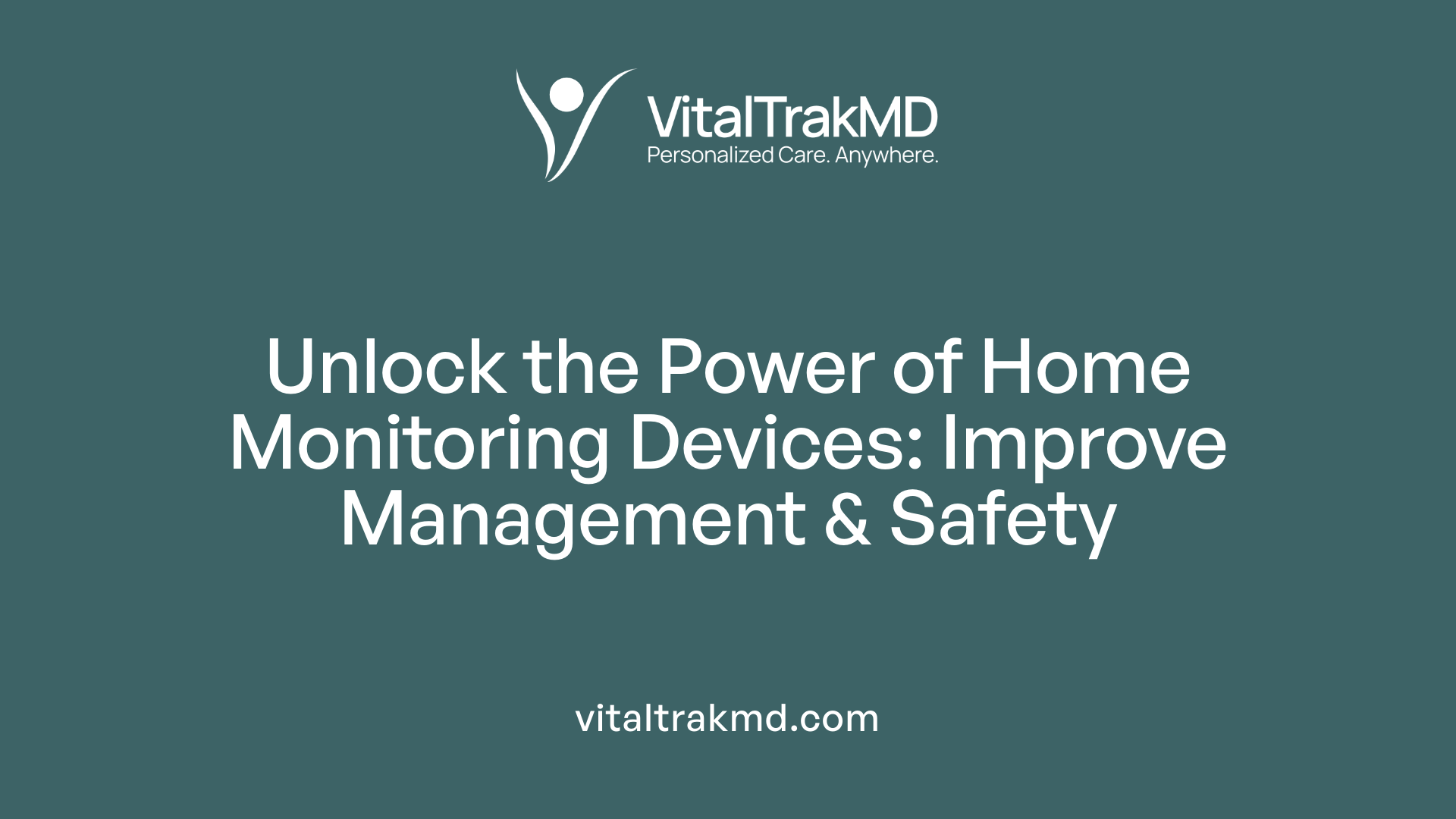
What are the applications and benefits of home health monitoring devices?
Home health monitoring devices serve a crucial role in modern healthcare by allowing individuals to track and manage their health outside traditional clinical settings. Their application spans numerous areas, notably in managing chronic illnesses, supporting recovery after surgeries, caring for elderly or pregnant individuals, and facilitating early intervention during health deterioration.
In chronic disease management, devices such as blood pressure monitors, blood glucose meters, and pulse oximeters enable continuous or regular assessment of vital signs. For instance, hypertensive patients can monitor blood pressure consistently, capturing data that assists healthcare providers in tailoring treatment plans. Diabetic patients benefit from blood glucose monitors, which help in maintaining optimal blood sugar levels and reducing complications.
Postoperative recovery is also enhanced through home monitoring. Patients can track vital signs like temperature, heart rate, or wound healing indicators, allowing early detection of infections or complications, reducing the need for frequent hospital visits.
Support for elderly and maternal care is another vital application. Devices such as fall detection systems, assistive health wearables, and pregnancy monitors ensure timely intervention and continuous health oversight. Elderly individuals living independently benefit from alert systems and remote monitoring solutions, increasing safety and peace of mind.
The early detection of health deterioration is made possible through real-time data collection. Sensors and devices continuously monitor parameters like oxygen levels, respiratory function, and cardiac signals, alerting both patients and clinicians to potential issues. This proactive approach can prevent emergencies and promote prompt medical intervention.
Patient engagement and self-care are significantly improved by the accessibility and ease-of-use of consumer-grade devices. Patients can better understand their health status, follow treatment regimens accurately, and make informed lifestyle choices. Regular feedback from these devices fosters an active partnership in health management.
Furthermore, these devices contribute to reducing healthcare costs. Remote monitoring minimizes unnecessary clinic visits, hospital stays, and emergency interventions. Population health management becomes more efficient as data helps identify at-risk groups, optimize resource allocation, and prevent disease progression.
The integration of these tools fosters a shift towards value-based care, emphasizing prevention and personalized treatment. As technology advances, the deployment of user-friendly, affordable, and reliable home health devices continues to propel healthcare towards more accessible and patient-centered models.
| Application Area | Devices Involved | Benefits | Additional Details |
|---|---|---|---|
| Chronic Diseases | Blood pressure monitors, glucometers, pulse oximeters | Better disease control, early complication detection | Enables ongoing management outside clinics |
| Postoperative Care | Thermometers, wound monitors | Early infection detection, improved recovery | Reduces hospital readmissions |
| Elderly and Maternal Care | Fall detection sensors, pregnancy monitors | Safety, continuous health oversight | Supports independent living and prenatal care |
| Early Detection of Deterioration | ECG, oxygen saturation monitors | Prevents emergencies, timely treatment | Continuous or periodic data collection |
| Self-care and Engagement | Wearables, mobile apps | Increased health awareness, adherence | Empowers patient participation |
| Cost Reduction | All portable health devices | Fewer hospital visits, reduced expenses | Supports healthcare system efficiency |
Summing up, the applications of home health monitoring devices are vast, covering a broad spectrum of health conditions and care needs. Their integration into routine healthcare offers tremendous benefits in terms of personalized care, early detection, patient involvement, and cost savings, ultimately transforming how health services are delivered in the community.
Types and Functions of Remote Patient Monitoring Devices
What are the common types and functions of remote patient monitoring devices?
Remote patient monitoring (RPM) devices encompass a broad spectrum of tools designed to collect and transmit vital health data from patients outside of traditional clinical environments. These devices help healthcare providers keep track of patient health in real-time, facilitating early intervention, managing chronic diseases, and reducing hospital visits.
One of the most prevalent RPM devices is the blood pressure cuff. These devices, often equipped with Bluetooth connectivity, measure systolic and diastolic blood pressure whenever needed and send data directly to healthcare systems. This continuous monitoring aids in managing hypertension and preventing complications.
Blood glucose monitors are crucial for diabetic care. Modern devices use biosensors and test strips that react with blood glucose, generating electrical signals processed to display glucose levels. Continuous glucose monitors (CGMs) allow patients to track their blood sugar levels proactively, alerting them to hypo- or hyperglycemic episodes.
Pulse oximeters are non-invasive devices that measure blood oxygen saturation and pulse rate. Usually clipped onto a finger, they are vital for patients with respiratory or cardiac conditions and have gained prominence during COVID-19 for assessing lung function.
Electrocardiography (ECG) devices capture the electrical activity of the heart through surface electrodes. Portable ECG units can transmit data in real-time to clinicians, enabling detection of arrhythmias or other cardiac irregularities remotely.
Wearable devices, such as activity trackers and continuous monitoring patches, collect a multitude of data, including steps, heart rate, sleep patterns, blood pressure, and even blood glucose. They enhance patient engagement and help in tailoring personalized treatment strategies.
Thermometers, including digital and infrared types, are fundamental in monitoring body temperature to detect infections like COVID-19 or fever. Bluetooth-enabled thermometers provide rapid readings and can transmit temperature data to healthcare providers.
Scales, particularly smart scales, measure body weight and other parameters like body water content or BMI. These are especially important for heart failure management, as weight changes can indicate fluid retention.
All these devices are designed for ease of use, often featuring user-friendly interfaces, connectivity options, and alert systems. They collect data either periodically or continuously, transmitting information via Bluetooth, Wi-Fi, or cellular networks to healthcare providers.
Integrating these devices into comprehensive remote health monitoring programs enhances chronic disease management, improves patient compliance, and facilitates early detection of health deterioration.
Types of RPM Devices and Their Functions
| Device Type | Main Function | Example Usage | Connectivity Features |
|---|---|---|---|
| Blood pressure cuff | Measure blood pressure levels | Hypertension management | Bluetooth, Wi-Fi, cellular |
| Glucose monitor | Track blood sugar levels | Diabetes control | Biosensors, test strips, Bluetooth |
| Pulse oximeter | Assess oxygen saturation and pulse rate | Respiratory conditions, COVID-19 monitoring | Wireless clip-on, Bluetooth |
| ECG device | Record heart’s electrical activity | Arrhythmia detection | Portable, Bluetooth, cloud storage |
| Wearables | Collect diverse biometric data | Activity tracking, heart rate, sleep monitoring | Bluetooth, apps |
| Thermometers | Measure body temperature | Fever detection, infection monitoring | Bluetooth, infrared sensors |
| Scales | Measure body weight and related metrics | Obesity management, fluid status in heart failure | Wi-Fi, Bluetooth |
This array of devices supports a comprehensive and remote approach to health management, allowing for continuous, non-invasive monitoring tailored to individual health needs.
Design Principles and Human Factors in Medical Device Usability
What are the design considerations and human factors influencing medical device usability at home?
Designing medical devices for home use involves several important considerations aimed at ensuring safety, effectiveness, and ease of operation. One primary focus is creating intuitive user interfaces that allow users—whether patients or caregivers—to operate devices without confusion. Clear, straightforward instructions are essential; they must be comprehensible to a diverse user base with varying literacy levels and familiarity with medical technology.
Ergonomics and physical design also play a critical role. Devices should be comfortable to handle, with controls and displays positioned for easy access and visibility. Avoiding user fatigue and physical strain helps promote proper usage, especially during repetitive tasks like blood pressure measurement or insulin injections.
Understanding human factors—how users perceive, decide, and physically interact with devices—is increasingly prioritized. Human factors engineering aims to reduce errors caused by misinterpretation or improper handling by analyzing the user's environment, behaviors, and limitations.
Regulatory standards from authorities such as the U.S. Food and Drug Administration (FDA) and the European Union (EU) push for the integration of usability engineering early in the device development process. This includes conducting user testing with representative populations to identify hazards linked to use errors and validating that the device can be used safely under typical home conditions.
Designing for a broad user base is vital. Devices must be accessible and safe for individuals with disabilities, cognitive impairments, or emotional challenges. This is especially important in critical applications such as infusion pumps, ventilators, or continuous glucose monitors that have substantial health implications if used incorrectly.
To optimize usability, manufacturers are encouraged to incorporate user feedback, adhere to international standards such as ISO 62366 (medical device usability engineering) and AAMI HE75 (human factors design guidance), and follow best practices for error prevention and risk mitigation.
In summary, effective design for home medical devices revolves around human-centered principles. By focusing on intuitive interface design, comprehensive instructions, ergonomic considerations, and rigorous validation, devices can be made safer, more accessible, and easier to operate for all users, ultimately supporting better health outcomes in home settings.
Safety Standards and Risk Management in Home Medical Devices
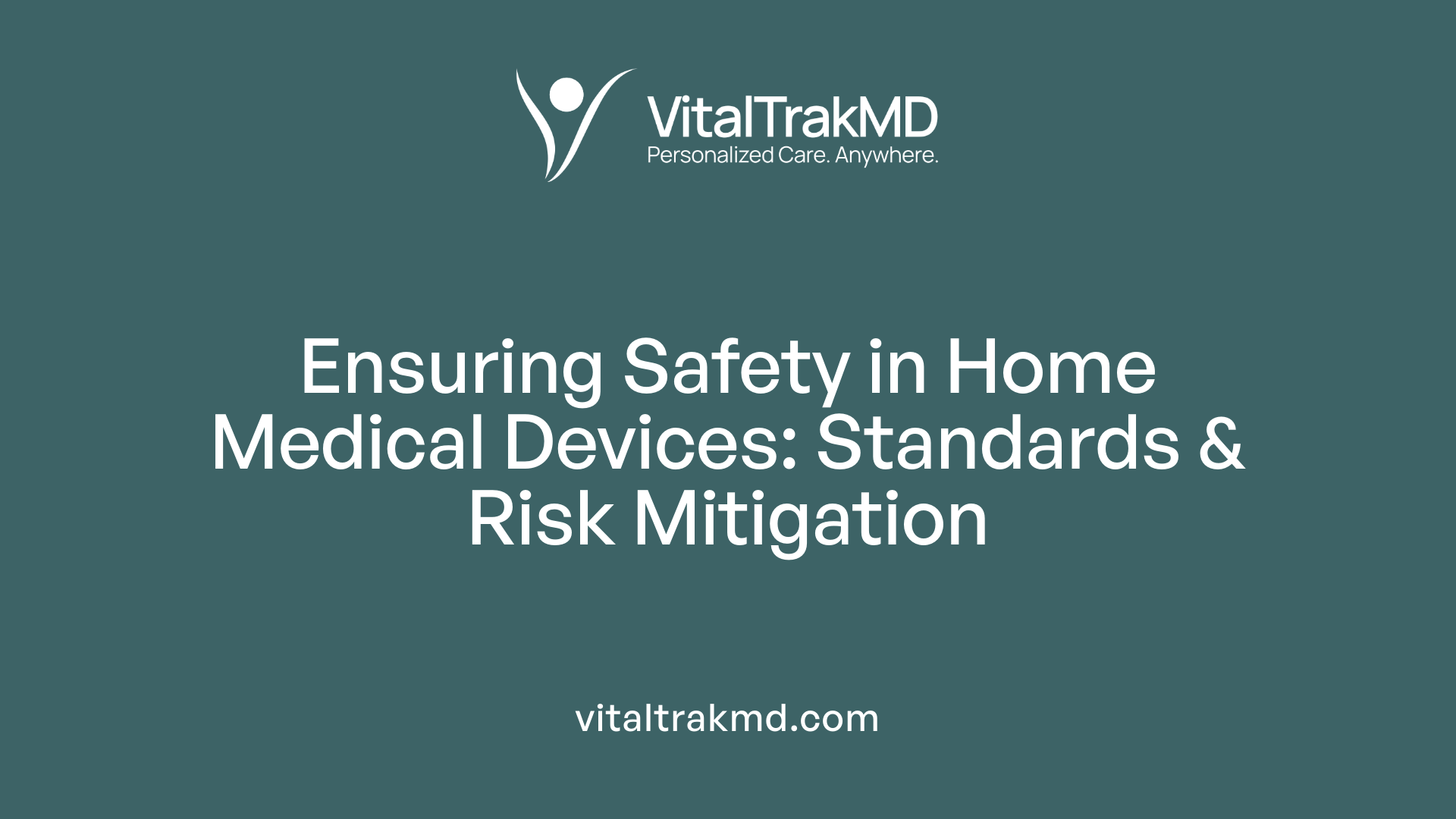
What safety standards and practices are recommended for home medical devices?
Ensuring the safety of home medical devices involves adhering to a series of rigorous standards and best practices designed to protect users and optimize device performance. International standards such as ISO 13485, which specifies requirements for a comprehensive quality management system for medical devices, serve as foundational guidelines. ISO 14971 focuses on risk management, emphasizing systematic processes to identify hazards, evaluate risks, and implement measures to mitigate them throughout the design and manufacturing stages.
Specifically tailored standards for home environments include IEC 60601-1, which sets medical electrical equipment safety requirements, with IEC 60601-1-11 addressing equipment intended for use in the home setting. These standards guide manufacturers to consider environmental factors common in homes, such as unstable power sources, clutter, and varying lighting conditions.
Risk analysis and mitigation efforts are central to safe device deployment. Manufacturers are encouraged to conduct thorough hazard analyses to identify potential points of failure or misuse. Design features like alarms for abnormal readings, emergency shutdown options, and insulation measures are critical components. Power backup solutions, such as batteries, ensure continuous operation during outages.
Devices must include safety features that alert users to errors or unsafe conditions. For example, blood pressure monitors might have visibility indicators and automatic shutoffs, while pulse oximeters may include alarm thresholds for oxygen saturation levels.
Regulatory oversight by agencies such as the U.S. Food and Drug Administration (FDA) ensures compliance with safety standards through registration processes, routine inspections, and review of device documentation. This oversight extends to post-market surveillance, where ongoing monitoring of device performance, adverse event reporting, and recalls play vital roles.
Manufacturers are also responsible for providing users with clear, detailed instructions regarding proper operation, maintenance, and safety precautions. Effective labeling and user manuals are essential for minimizing misuse. Healthcare providers have a role in ensuring that users receive appropriate training and understand safety features.
Overall, a combination of adherence to international safety standards, rigorous risk management, robust device design, comprehensive regulation, and user education is necessary to uphold safety and minimize risks associated with home medical devices.
Regulatory Frameworks and Privacy Concerns
What regulatory and privacy considerations are important in the deployment of home medical devices?
Deploying medical devices for home use involves navigating a complex landscape of regulations and privacy protections. The Food and Drug Administration (FDA) in the United States is a primary regulator, classifying home medical devices based on risk levels, and requiring rigorous evaluation for safety and efficacy before approval. Devices such as blood pressure monitors, glucose meters, and pulse oximeters must meet specific standards set by the FDA, often involving premarket approval or clearance, especially if they are categorized as medical devices.
Beyond FDA regulations, compliance with international standards such as the CE mark in Europe ensures that devices meet safety and performance benchmarks established by the European Union. These certification processes are crucial for international deployment and foster consumer trust.
Data security and privacy are paramount, as these devices collect sensitive health information. In the US, the Health Insurance Portability and Accountability Act (HIPAA) governs the protection of protected health information (PHI). HIPAA mandates strict controls around data encryption, access controls, and audit trails to prevent unauthorized use or disclosure. Similarly, the European Union’s General Data Protection Regulation (GDPR) enforces stringent standards for data privacy, emphasizing user consent, data minimization, and transparency.
State and local laws such as the California Consumer Privacy Act (CCPA) further enforce privacy rights, allowing consumers to control their personal data and request deletion or access.
Effective data security practices include implementing robust encryption during data transmission and storage, ensuring secure user authentication methods, regularly updating device firmware, and conducting vulnerability assessments. Manufacturers should incorporate secure communication protocols like TLS/SSL and employ multi-factor authentication wherever possible.
Device certification and approval processes require manufacturers to demonstrate compliance with safety, performance, and cybersecurity standards. This often involves rigorous testing, quality management systems, and post-market surveillance. The FDA’s Medical Device Reporting (MDR) system allows ongoing monitoring of device performance and incident reporting.
To navigate this environment successfully, stakeholders must perform comprehensive privacy assessments, including privacy impact assessments and user data handling audits. Monitoring practices should verify that data sharing complies with user preferences and legal requirements.
Given the diversity of home environments, human factors considerations are essential to ensure that devices are safe and usable by various populations, including vulnerable groups. Continuous collaboration with healthcare professionals, human factors experts, and regulatory bodies helps address safety concerns specific to non-clinical settings.
In sum, the deployment of home medical devices entails strict adherence to regulatory standards and data privacy laws. Combining compliance with robust cybersecurity measures ensures that health data remains protected, fostering trust in these increasingly vital technologies.
Technological Innovations Shaping Future Home Healthcare
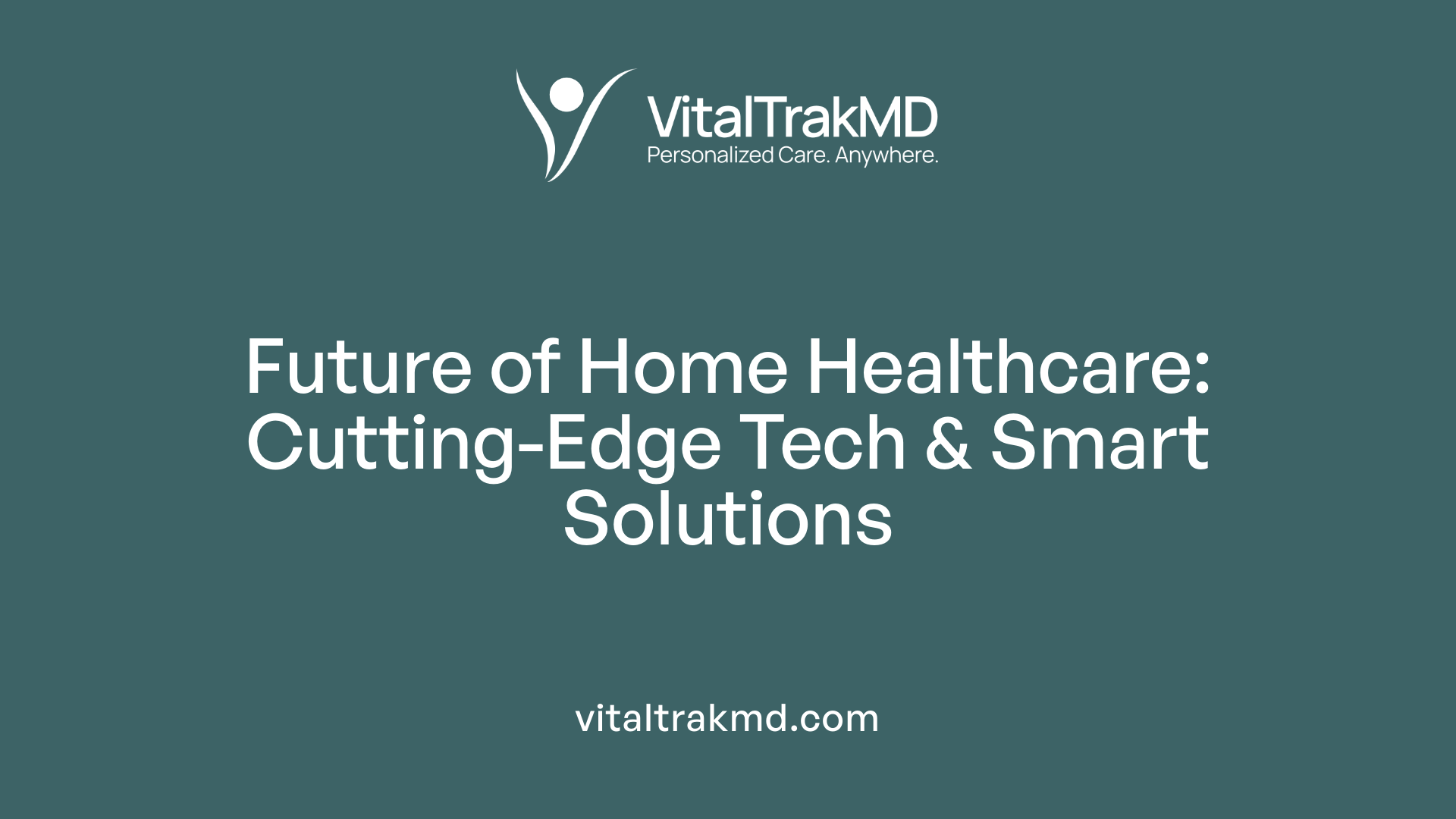
What are current technological trends and future developments in home healthcare devices?
The landscape of home healthcare is rapidly evolving, driven by remarkable advancements in technology. Today, devices are increasingly incorporating artificial intelligence (AI), machine learning, and the Internet of Things (IoT) to enhance personalized and predictive health management.
AI and machine learning enable devices to analyze large volumes of health data, identify patterns, and predict issues before they become critical. For example, smart blood pressure monitors can detect anomalies indicative of hypertension risks, prompting early intervention.
The integration of IoT allows various devices—such as blood glucose monitors, pulse oximeters, and wearable fitness trackers—to connect seamlessly, sharing data in real-time with healthcare providers. This connectivity supports continuous monitoring and timely alerts, significantly improving patient outcomes.
Passive sensors, including embedded and non-invasive monitoring systems, play a crucial role by unobtrusively tracking vital signs, fall risks, and environmental hazards. These sensors enhance safety without disrupting daily routines. For instance, motion sensors can detect falls or activity levels, alerting caregivers instantly.
Active devices like digital thermometers and ECG monitors, combined with telehealth platforms, foster remote examinations and consultations. Patients can transmit health data instantaneously, enabling clinicians to make informed decisions remotely, which is especially vital during pandemics or for those with mobility issues.
Advancements in wearable technology—such as activity trackers, smartwatches, and continuous health monitoring patches—contribute to comprehensive health oversight. They record metrics like heart rate, sleep patterns, and physical activity, encouraging health-conscious behaviors and adherence to treatment plans.
Interoperability and data standardization are critical areas of focus, ensuring that devices from various manufacturers can communicate effectively. Standardized data formats and secure protocols facilitate seamless integration into electronic health records (EHRs), fostering holistic patient management.
The rise of smart home technologies and mobile health applications further strengthens patient engagement and independence. These tools assist in medication management, appointment scheduling, and social connectivity, reducing feelings of isolation and promoting active participation in healthcare.
Looking ahead, future developments aim to enhance device reliability, usability, and privacy safeguards. Innovations like embedded sensors, passive monitoring systems, and AI-driven analytics are poised to revolutionize home healthcare by making it more proactive, precise, and accessible.
Ultimately, these technological trends will lead to more connected, resilient, and patient-centered home care ecosystems. They promise to reduce hospital admissions, foster early diagnosis, and empower individuals to manage their health effectively within their homes.
| Technological Feature | Current State | Future Outlook | Details |
|---|---|---|---|
| AI & Machine Learning | Used for pattern recognition and alerts | More predictive analytics and personalized care | Enhances diagnosis, treatment adaptation, and health predictions |
| IoT & Device Connectivity | Wide adoption in healthcare settings | Full integration for comprehensive health ecosystems | Ensures seamless data flow between devices and providers |
| Passive & Embedded Sensors | Embedded in various devices | Greater unobtrusiveness, environmental awareness | Detects falls, environmental risks, and subtle health changes |
| Telehealth & Remote Diagnostics | Widely used during COVID-19 pandemic | Enhanced virtual care and remote diagnostics | Supports immediate clinician connection and decision-making |
| Wearables & Smart Devices | Popular for activity and vital signs | Advanced biosensors, longer battery life | Tracks health metrics continuously, encourages healthy behaviors |
| Data Standardization | Progressing through standards bodies | Full interoperability, unified data formats | Facilitates comprehensive health records and analysis |
As these technologies mature, they will profoundly impact how healthcare is delivered, making it more efficient, accessible, and tailored to individual needs, while also safeguarding privacy and security.
Challenges and Future Outlook in Home Medical Device Deployment
What challenges and initiatives exist in the development and deployment of home health devices?
The growing use of home health monitoring devices brings with it several obstacles that affect their development, deployment, and effective use. Technological barriers are among the most prominent issues. Connectivity problems, especially when devices rely on Bluetooth or Wi-Fi connections to transmit data, can disrupt continuous monitoring and compromise data accuracy. Moreover, ensuring interoperability between various devices and integrating data seamlessly into electronic health records remains a complex challenge for developers.
Reliability and durability of devices also influence their effectiveness. Devices used at home must withstand varying environmental conditions and user handling, which adds to design complexities.
User-related challenges are equally significant. Digital literacy gaps among users, particularly among older adults or those with limited technological experience, hinder proper device operation. Misinterpretation of device readings or misuse due to lack of understanding can lead to alarming false results or missed health issues.
Access disparities are a notable concern. Fragile health ecosystems, limited technology infrastructure, and socio-economic factors leave underserved populations behind, amplifying health inequities. These disparities mean that not everyone benefits equally from advanced home health technology.
Regulatory hurdles, including certification and safety standards, can slow down the availability of new devices and restrict their adoption. Additionally, reimbursement policies lack uniformity, often leading to financial barriers that restrict patient access and clinician prescribing.
In response, multiple initiatives aim to address these challenges. The development of standards for device interoperability and usability is underway, guided by efforts from international organizations such as ISO and ANSI/AAMI. These standards aim to ensure devices are user-friendly, safe, and communicate effectively across platforms.
Design approaches focused on user-centered and universal design principles are being emphasized to cater to diverse patient populations. Such approaches aim to make devices intuitive and flexible, reducing user errors.
Reimbursement policies are expanding, with insurance providers integrating coverage for home monitoring as part of chronic disease management programs. Public health campaigns are also promoting digital literacy, especially targeting vulnerable populations.
Regulatory agencies like the Food and Drug Administration (FDA) are proactively working to enhance safety and usability. The FDA’s Medical Device Home Use Initiative promotes safer deployment through guidance on human factors engineering, ongoing post-market surveillance, and encouraging manufacturers to incorporate feedback from real-world users.
These combined efforts support the evolution of a safer, more accessible, and integrated home health monitoring ecosystem that aligns technological innovation with user needs and regulatory frameworks.
The Role of Sensors and Telehealth in Remote Monitoring
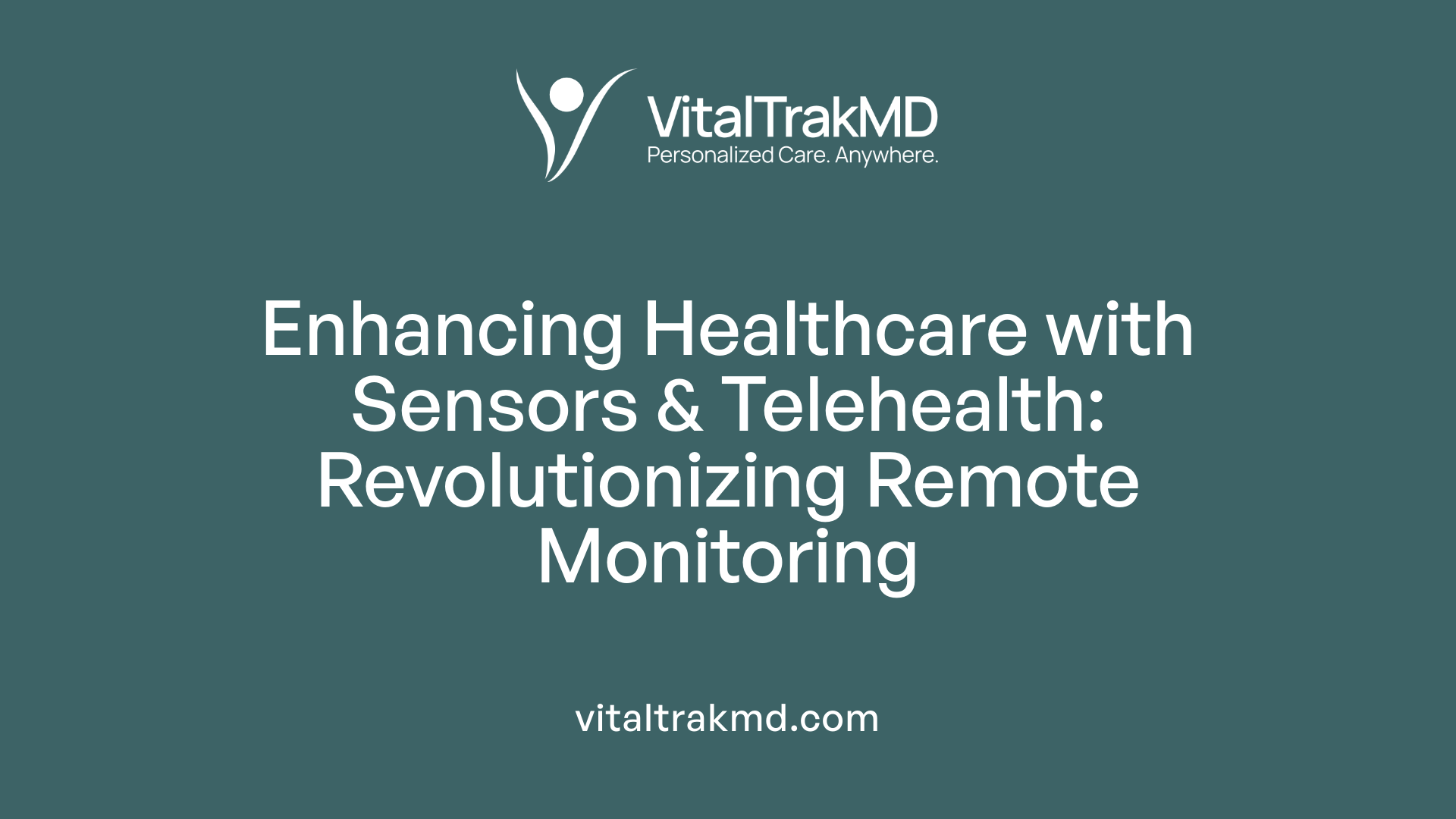
How do sensors and telehealth technologies enhance remote patient monitoring?
Sensors and telehealth technologies have revolutionized the way healthcare professionals track and manage patients' health outside traditional clinical environments. These tools enable continuous, real-time collection of vital signs and health indicators, such as blood pressure, blood oxygen saturation, heart activity, and glucose levels. They come in various forms, including wearable devices, implantable sensors, and digital monitors, making health data accessible for patients and clinicians alike.
Wireless connectivity options, such as Bluetooth, Wi-Fi, and emerging 5G technology, facilitate the fast and secure transmission of data from these sensors to healthcare providers. This seamless data flow supports real-time monitoring, allowing clinicians to observe subtle changes and early signs of health deterioration without the patient having to visit a clinic.
Practical deployment examples include Bluetooth-enabled blood pressure cuffs that transmit readings directly to a provider’s dashboard, continuous glucose monitoring devices for diabetics, and pulse oximeters worn on fingers to measure oxygen levels. These devices often connect to telehealth platforms, which aggregate data and provide visualizations and alerts. This enhances the ability of caregivers to intervene promptly and adjust treatments proactively.
Remote sensor deployment not only supports ongoing disease management but also aids in early diagnosis of conditions like kidney dysfunction or respiratory diseases. For instance, ECG patches and activity trackers monitor cardiac health and physical activity levels, giving a comprehensive overview of a patient's status.
Despite these advantages, integrating sensors and telehealth into routine care faces challenges. Data management workloads increase as more information needs processing and analysis. Privacy and security concerns are paramount, requiring robust encryption protocols and compliance with regulations like HIPAA. Additionally, technological barriers, especially for elderly users unfamiliar with digital devices, can hinder effective implementation.
Overall, sensors and telehealth systems enhance remote patient monitoring by providing continuous, accurate, and timely health information. They support personalized care, reduce hospital visits, and foster greater patient involvement in health management, shaping a future where healthcare is more accessible and responsive outside traditional settings.
Empowering Patients and Future Perspectives in Home Healthcare
The evolution of home health monitoring devices is transforming the landscape of healthcare by providing patients and providers with unprecedented tools for proactive, personalized, and efficient care. Advances in sensor technology, telehealth platforms, and intelligent device design are making remote monitoring safer, more accurate, and accessible to broader populations. These innovations hold the promise of reducing hospitalizations, improving quality of life, and making healthcare more cost-effective. However, realizing this potential requires continuous attention to safety standards, human factors, regulatory frameworks, and privacy protections. As technology continues to advance, the integration of AI and interoperability standards will further personalize health management, ultimately empowering individuals to take greater control over their health. The future of home healthcare relies on collaboration among engineers, clinicians, policymakers, and patients to develop inclusive, safe, and innovative solutions that meet the growing needs of an aging population and chronic disease management.
References
- Basic technology and proper usage of home health monitoring devices
- Medical Devices in Home Health Care - NCBI
- The Growing Use of Home Health Devices: Advice for Providers and ...
- 7 Common Remote Patient Monitoring Devices
- At-Home Health Monitoring Devices for Chronic Care Management
- Safe Home Healthcare: Addressing Risks in Home Medical Device ...
- The Ultimate Guide to Remote Patient Monitoring Devices
Recent articles
Want to Feel Better and Live Healthier?
Join hundreds of patients taking control of their health with personalized care that fits their life – not the other way around.
Rated 4.8/5 by 32+ customers







